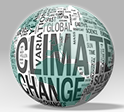
COP21
The Role of International Financial Institutions, Central Banks and Monetary Policies in the Low-Carbon Transition
An argument in favor of Green infrastructure Quantitative Easing (GIQE).
Par Colin Hines
This article is part of a special series discussing the economic dimensions of environmental issues ahead of the - COP 21 Climate change Conference held in Paris on 30 November-11 December 2015. Read more about it here.
 |
Colin Hines is Co-Director of Finance for the Future and an advisor to Green Party MP, Caroline Lucas. He worked at Greenpeace International for ten years, where he was Co-ordinator of its Economics Unit. He is an Associate of the International Forum on Globalisation, a San Francisco based alliance of activists, academics and economists committed to challenging the adverse effects of globalisation and free trade and in the process to develop alternatives. Colin helped to form the grassroots NGO, Localise West Midlands, and is author of Localisation: A global manifesto (2000).
|
Quantitative Easing (QE) is back on the global economic and political agenda. The growing threat of deflation has meant that Japan has reintroduced QE, and the European Central Bank has begun its own programme to deal with the serious economic problems of the Eurozone.
This means that it is time to consider the introduction a new, revised QE that would fund infrastructure programmes for countries across the globe to help fund the low carbon transition needed to tackle Climate Change. It would concentrate on energy efficiency and renewables and hence have the additional advantage of stimulating employment, business and investment in every city, town, village and hamlet in the countries concerned.
Europe is very keen to play a central role in ensuring that the COP 21 meeting in Paris this December is a success. A key hurdle will be finding adequate funding for developing countries to help pay for their transition to a low carbon future. One thing that could help to ensure a success would be if the European Central Bank printed say €10 billion and used it to buy bonds from the European Investment Bank, perhaps as part of its existing €60 billion a month QE programme. This could then be used to fund small and medium sized businesses, perhaps in particularly vulnerable areas such a Bangladesh or the Small Island States. The money would be invested over a realistic time scales and so be non-inflationary.
Green Infrastructure QE is economically feasible and would not need to be repaid.
Such an approach is technically feasible since Mark Carney, the Governor of the Bank of England, is on record as saying that if the government requested it, then the next round of QE in the UK could be used to buy assets other than government debt.
Since QE involves the ECB creating e-money and using it to buy assets, this will not increase Europe’s repayable debt levels. Professor Werner, Director of the Centre for Banking, Finance and Sustainable Development at the University of Southampton, the creator of the quantitative easing concept, has stated that since the central bank can simply keep the assets on its balance sheet, there is no need for taxpayers to repay this debt or for it to be considered as an expansion of public debt
Therefore in the case of Green Infrastructure Quantitative Easing, the bonds issued by the ECB will never need to be repaid. This would be particularly helpful to developing countries, who might then choose to charge low interest rates and recycle the repayments via revolving funds. Such GIQE results in essential infrastructure for a low carbon economy countrywide, it would have a galvanising economic effect and wide-ranging benefits, since in addition to government agencies it would, to be effective, involve the private sector, trade unions, community groups and NGOs.

